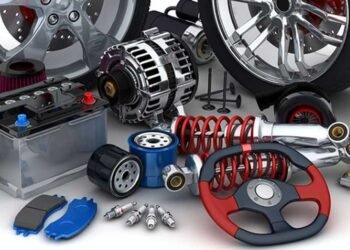A large proportion of the world’s most prestigious motor and technology companies were founded in Germany – and the world is more reliant on such inventions than you might expect. For example, in 2022, around 3.4 million German vehicles were produced, which was an increase from 3.1 million cars the previous year. Whether it’s cars or other game-changing inventions, innovation is something that German engineers and inventors haven’t shied away from.
But what are some of the most iconic examples of German inventions? Here’s what you need to know.
Why is Germany a place of motor and technology innovation?
Germany has long been known for its technological innovation. Its education system reflects this too, by striving for excellence in this field, from engineering to mathematics. This, paired with an ambitious attitude and an openness to pursuing new concepts has resulted in the country founding several highly regarded global automotive and technology companies.
From Porsche to Mercedes-Benz and of course, the popular BMW 1 series, Germany is known for its motoring brilliance. BMW was launched in 1916 for the production of aircraft engines and has since evolved into one of the world’s leading automobile brands. On top of this, other inventions have emerged, including the chip card, the MP3 and even rocket-powered aircraft.
6 German icons who shaped the world’s innovation
Here are some of the country’s most prestigious inventors and engineers:
Heinrich Focke – Helicopter
Focke was fascinated by the idea of helicopters and by 1932, he’d conducted a study that investigated the challenges of rotary-winged flight control and developed a small model helicopter off the back of this. Four years later, he refined and completed his first completely controlled helicopter, which was on display in Berlin.
Karl Benz and Gottlieb Daimler – Automobile
One of the most significant inventions in modern society, the automobile changed the game for travel and commuting. Despite not having met in person, both men developed the world’s first automobiles in 1886. The manifestation of this invention didn’t come until a few years later. At the end of March 2023, there were 40.8 million licensed vehicles in the UK alone, showcasing just how much we rely on them today.
Rudolf Diesal – Diesal engine
After graduating in engineering , Diesal developed an interest in thermal and fuel efficiencies after being exposed to inefficiencies when developing refrigeration systems. His aim was to design a high compression, self igniting engine using the thermodynamic cycle. This resulted in him creating an engine with 75% efficiency. These foundations have been refined over time, but the premise still remains.
Karl von Drais – Bicycle
Driven by a need to inspect his tree stands after Mount Tambora exploded in 1815, the bicycle was born out of practicality. The sulphur dioxide and lack of food after the explosion resulted in many horses being slaughtered. From a lack of resource, Karl von Drais learnt that you could place wheels in a line on a frame and balance. And from this initial concept, the bicycle was born.
Otto Schultze – Speedometer
The speedometer is used in a range of transport modes, from boats to cars. It’s used to count revs, indicating the number of revolutions of the wheel or the gear shaft as a distance per unit of time. After it was patented in 1902, it spread through the automotive industry at a global scale. The wider range of speeds available in transport today has made this invention even more crucial to manage our speed.
Walter Linderer – Airbag
In 1953, this German inventor received a patent for an inflatable cushion that would help to protect drivers in car accidents. His designs showed that they were to fill up with air when the bumper of a car came into contact with an obstacle.












